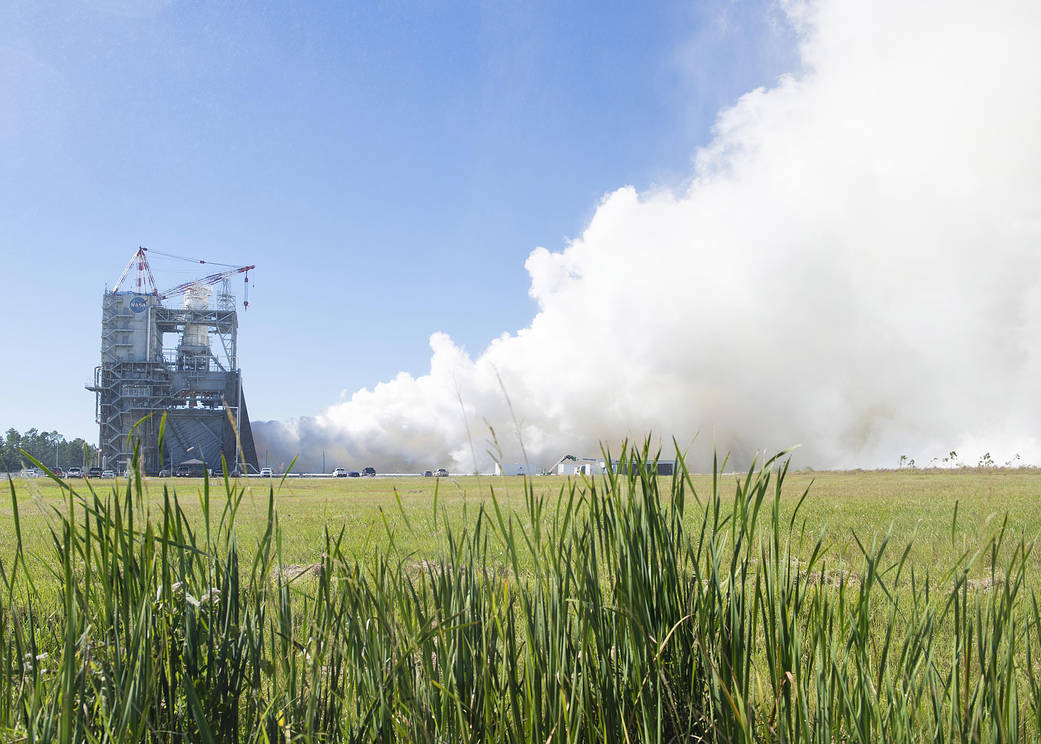The arrival of fall in south Mississippi means billowing clouds of steam exhaust is in the air as NASA continues a series of RS-25 engine tests at Stennis Space Center near Bay St. Louis. A team of operators conducted another successful 500-second RS-25 hot fire on the A-1 Test Stand at Stennis on Oct. 11, marking the fourth in a series that will extend into 2019. Once again, the hot fire features an acceptance test of an RS-25 engine controller for use on a future flight of NASA’s new Space Launch System (SLS) rocket. RS-25 testing represents a critical step in development of the SLS. A quartet of RS-25 engines, firing simultaneously, will provide a combined 2 million pounds of thrust to help launch the new rocket. NASA has been testing RS-25 engines at Stennis for SLS use since early 2015. The initial engines are former space shuttle main engines, modified to provide the additional power needed for the SLS rocket. The new flight controller is the central component of the modification and will operate as the RS-25 “brain,” helping the engine communicate with the SLS rocket and providing precision control of engine operation and internal health diagnostics. In addition to the flight controller, this hot fire also featured continued testing of two other new engine components – a 3D-printed pogo accumulator and main combustion chamber fabricated using an innovative bonding technique. The 3D-printed pogo accumulator dampens potential propellant pressure oscillations that can cause a rocket to become unstable in flight. The main combustion chamber was fabricated using a bonding technique called hot isostatic pressing (HIP), which saves considerable time and money over more traditional methods. In addition to testing components, operators also continue to explore various engine performance levels and limits. Each RS-25 hot fire allows operators to test the performance and reliability of engine components and moves NASA closer to actual launch of the SLS on its maiden missions. The SLS Exploration Mission-1 will test the new rocket and carry an uncrewed Orion spacecraft into space beyond the Moon. Exploration Mission-2 will be the first flight to carry humans aboard the Orion spacecraft to deep space. RS-25 tests at Stennis are conducted by a team of NASA, Aerojet Rocketdyne and Syncom Space Services engineers and operators. Aerojet Rocketdyne is the RS-25 engine prime contractor. Syncom Space Services is the prime contractor for Stennis facilities and operations.
2 min read



























